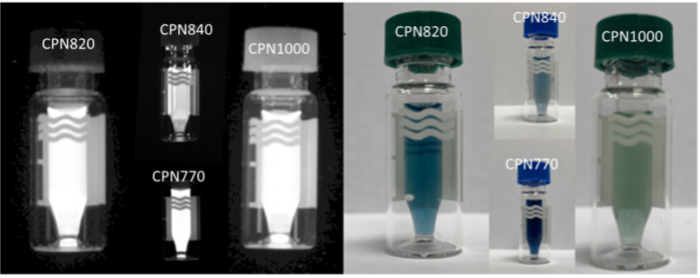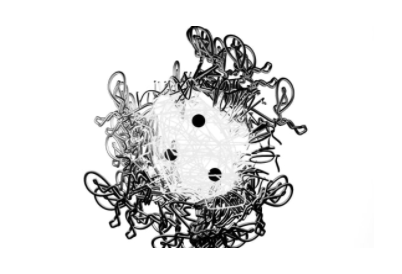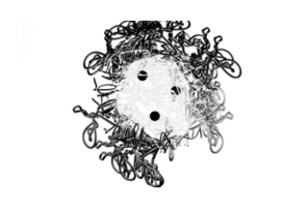Our range of Near Infrared (NIR) Conjugated Polymer Nanoparticles (CPNs™) offer significant benefits over conventional dyes and fluorophores for biological studies.
Key advantages of CPNs™ for IR imaging:
- Powerful contrast for clear imaging
- Non-toxic and stable across a wide range of conditions, allowing for long periods of storage with no loss of signal intensity
- Signal is directly proportional to the target protein concentration, enabling reliable quantification
- Wide range of CPN™ colours in addition to NIR allowing compatibility with a variety of systems
- Quick and easy linkage to antibodies and oligonucleotides with our new LINKBRIGHT™ conjugation kits.
Take a look at our IR CPNs™ below:

CPNs™ in IR imaging
Infrared (IR) imaging is a valuable tool to study cellular and biological processes because of the transparency of blood and skin in this part of the electromagnetic spectrum. Using IR fluorescent dyes or labels, deep tissue structures can be visualised. Currently, the potential of in vivo IR imaging is limited by properties of the available imaging reagents. Indocyanine green (ICG) is a conventionally used clinical infrared imaging agent (NIR-I), which rapidly decomposes in water at room temperature and therefore poses challenges for storage and use in the body. Alternative dyes and probes have constraints relating to insufficient contrast or concerns about toxicity.

The unique properties of our CPNs™ offer advantages over conventional IR dyes and can enhance IR imaging. The emission peaks of our CPN™ IR fluorophores range across 680 nm, 770 nm, 820 nm, 840 nm and 1000 nm.

